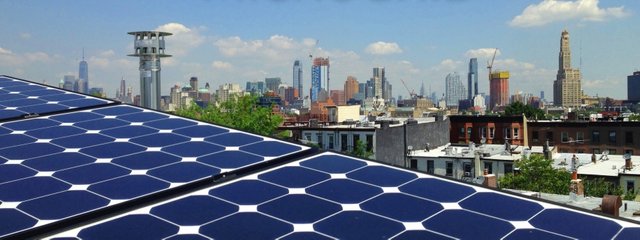Blockchain is getting ready to change the world. From transforming the way banks move money, changing how our medical records are handled to how energy transmitted, stored and monetised. This idea of decentralized shared ledger will soon be the way most business transactions are done. With more than 50% of major corporations planning to transition to blockchain business applications in 2018, opportunities for investors and entrepreneurs are there for the taking.
According to Accenture multi-year new energy consumer research program survey 2016
69% of consumers are interested in having energy trading market place.
47% of consumers plan to sign up for a community solar program managed by a 3rd party and that even allows them to benefit from solar even if they don’t have solar panels on their property within the next 5 years.
This survey clearly shows that consumer habits are changing which means they are more inclined to fulfil their energy needs from decentralized energy resources functioning within their communities rather than traditional power generation sources responsible for polluting our environment.
A microgrid can be described as a cluster of loads, decentralized energy resources (DER) (e.g. PV panels, diesel generators) and energy storage systems (ESS) (e.g. battery, fly wheel), which are operated in coordination to supply electricity reliably [1]. On the other hand, blockchain is a secure, transparent and decentralized digital ledger designed for exchanging value/information in a peer-to-peer network [1].
The idea of establishing microgrids to optimize both energy usage and generation to achieve customer goals for resilience, reliability, and sustainability is definitely the way forward for modernizing our electricity network but if combined with blockchain technology full potential of microgrids could be unlocked because the decentralized structure of blockchain perfectly fits into the decentralized approach for control and business processes required to run microgrids. If we combine the attributes of microgrid and blockchain then the energy system of the future could be envisioned being developed in foreseeable future. Microgrid could optimize the way we produce and consume energy and blockchain could be used as an accounting tool for the accurate documentation of ownership, metering and consumption billing. And let’s imagine if we end up succeeding putting microgrid everywhere on earth. One day, an expanding national grid would decide to connect up these self-sufficient energy powered villages. But what will the microgrid operators do then? Will their customers simply be poached? Instead, it might be possible to use blockchain distributed ledger as accounting software to keep record of what electricity residents are consuming, and from where. That way, the operators of the national grid and the microgrid can be paid appropriately. If blockchain or some similar technology could provide that accounting system, it could turn the national grid from being the foe of microgrids in a lot of places to being their friend.
The number of installed microgrids is small, but it's growing in many regions around the world. The International Energy Agency (IEA) estimates that to achieve its goal of universal access to electricity, "70% of the rural areas that currently lack access will need to be connected using mini-grid or off-grid solutions."
The ability to determine what’s more cost effective to pull power from grid at any given time or to use your neighbour’s solar PV that’s very exciting and would play key role in making energy systems of the future. However, the energy system does not only consist of a physical grid structure but also of the electricity market. In order to be able to talk about a well-functioning energy system, there needs to be a well-functioning market that supports the grid infrastructure as well, blockchain can play a key role in establishing efficient real time communication strategy between the electricity market and physical grid to make things more decentralized and digitized.
References
[1] Esther Mengelkamp, ” Designing microgrid energy markets A case study: The Brooklyn Microgrid”, 2018.
[2] Andrija Goranovi, ”Blockchain Applications In Microgrids”, 2018.
[3] http://www.microgridinstitute.org/about-microgrids.html [Online]
[4] Sihvonen-Punkka A. (2016). Fingrid Oyj Publication. Electricity market needs fixing: http://www.fingrid.fi/fi/ajankohtaista/Ajankohtaista%20liitteet/Lehdist%C3%B6tiedoteliitteet/2016/FINGRID-Electricity-Market-Needs-Fixing-2016-WEB.PDF
